What is candidate rejection email?
If you have troubles filling a vacancy, chances are you’re ‘fishing’ from a very small talent pool. This is due to the availability gap between active and passive candidates, where only 30% of working professionals are actively looking for a career change.
Modern recruiters are more interested in passive candidates for they are the hidden gems who may possess the top demanding yet hard to find skills, and they make up a large proportion of the labor market.
To win this group of candidates, employers must have a clear recruiting plan, including sourcing, outreach, and closing strategies.
This guide to acquiring passive candidates will cover the following topics:


Passive candidates are people who don’t actively look for a job but may be open to opportunities. Their motivations to make a career change also different from that of active job seekers.
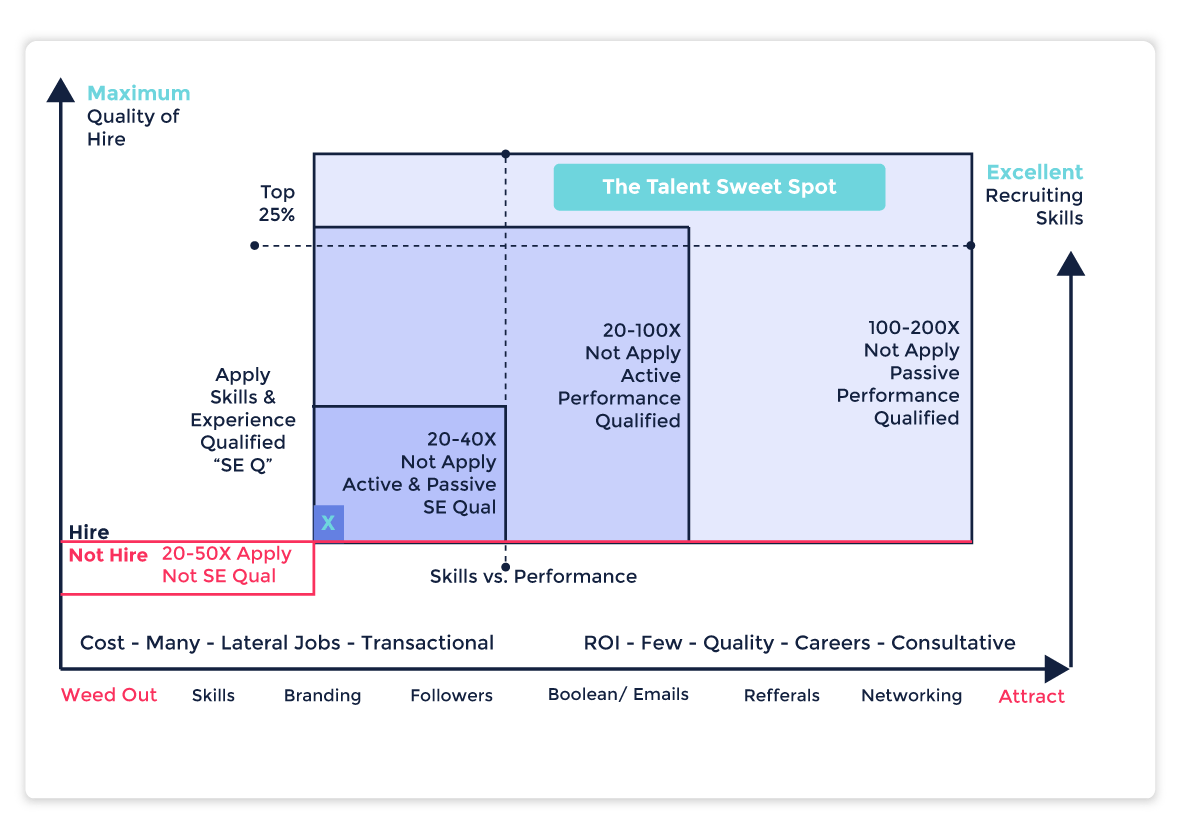
The Total Talent Market
Recruiting passive candidate allows you to narrow down the potential candidates effectively by skills or by industry. Some employers even seek out top performers from their competitors. But the most significant factor to consider is the quality of the candidates in comparison to the general applications that you receive through a job ad.
Another plus point that makes this group of talent more desirable is their known commitment as well as track record of achievements in their current roles. This enables anyone in the recruitment team to make better hiring decision if they don’t trust their instinct.

Once you have identified the ideal candidates to reach out to for the opening positions, it’s time to find them.
There are multiple sources where you can start the talent search. However, depending on the roles, you’ll need to specify the respective platforms where top talents hang out.
For instant, if you want to hire a software engineer, the first place you should look into is tech platforms like Stack Overflow, Codility or Tech in Asia; while creative individuals can be found on Behance or Dribbble.
With LinkedIn strengthens its position as the largest professional social networking platform, you have a reason to rejoice! The perfect candidates might just be a few clicks away on LinkedIn. Its search feature allows you to search for talents using keywords like job titles or job categories. You can then filter the results based on the following criteria:
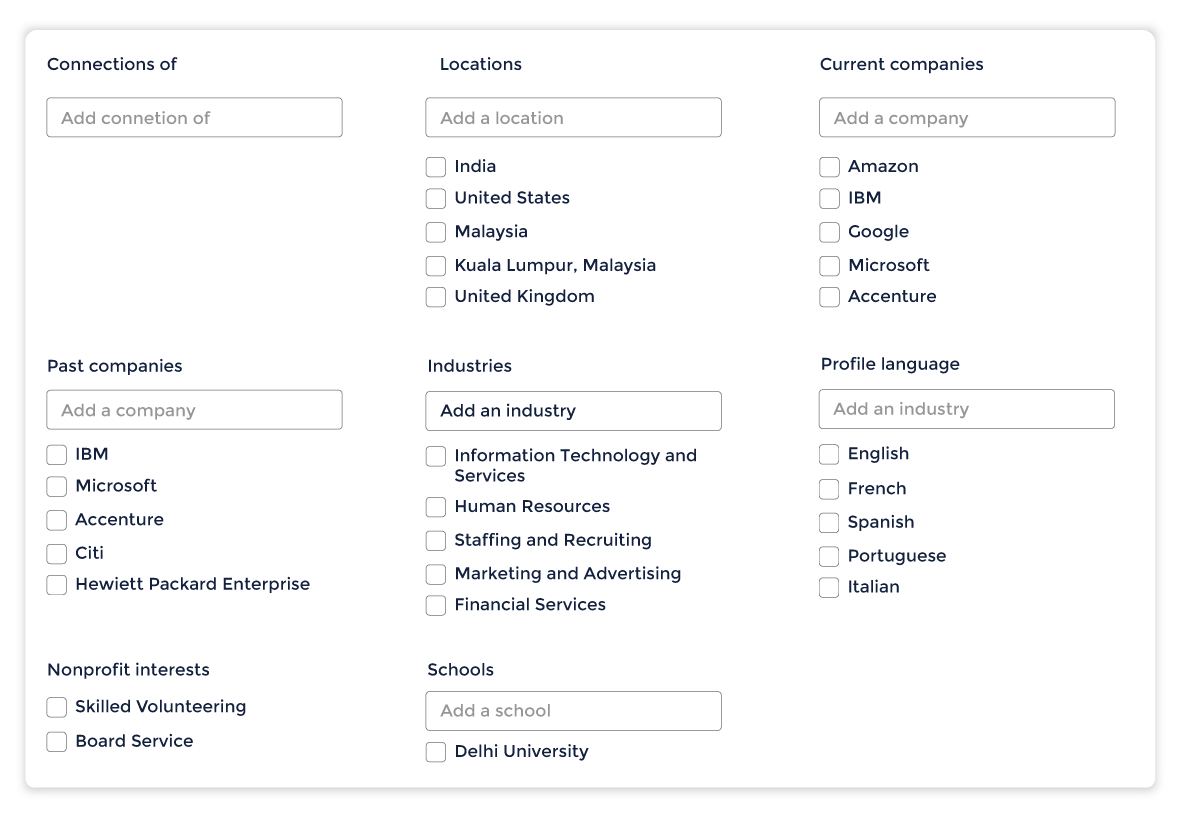
Now, to source candidates from product social platforms, you’ll need a quick tool to grab their information instead of manually doing the data entry job. Imagine you have to export hundreds of profiles everyday and input them to a resume bank one by one! This is where you can utilise TalentCloud’s sourcing chrome extension to streamline the process. With just a single action, you’ll be able to import the potential candidate’s LinkedIn profile into your own candidate database and assign him or her to a respective opening position for outreach later on.

Another source to get in touch with passive candidate is through offline networking events. In any industry, there are countless of community meetup where you can join to meet fellow industry players and practitioners. Hop on to sites like Meetup or Eventbrite to scout for the events where your ideal candidates might be interested in!
In this day and age, it’s not what you know but who you know. This rings true to the talent acquisition scene as well. Make the most of your company’s referral program to identify talents quickly, especially for more senior or critical roles. Employees’ connections make wonderful passive candidates as there’s already a certain level of trust established.
Don’t forget to look into your past recruitment drive as well. As not all rejected candidates are disqualified candidates, you wouldn’t want to completely ignore this group of “runner-ups”. Also, this is why it’s crucial to nurture your talent pool since day one and continuously. If those candidates enjoyed the previous job seeking experience with your company, they will very likely to give it a second try.

Hiring passive candidates is not a simple venture. Not only will you have to locate the right person, you’ll also learn how to sell your employer brand as well as the position in order to get them interested. To some extent, it’s very similar to tele sales, which requires researching, cold calling and closing skills.
First and foremost, you must be familiar the “product” that you are selling, in this case, the opening job. If you are sourcing for clients or other internal departments, make sure that you understand about the job scope as well as its requirements thoroughly. This knowledge will prepare you for any question that may arise as you reach out to the potential candidates. More importantly, to ensure that the talents you’ve filtered are the right match.
Attract
To win the race in this candidate-driven “business”, you must approach passive candidates while wearing a marketer’s hat.
Your ideal candidates may or may not know about your company. So it’s important that you get the recruitment marketing strategy right in order not to make them feel pestered.
Most importantly, you must get to know the candidate before reaching out to them. When studying the candidate’s profile, try to gather sufficient insights to answer the following questions:
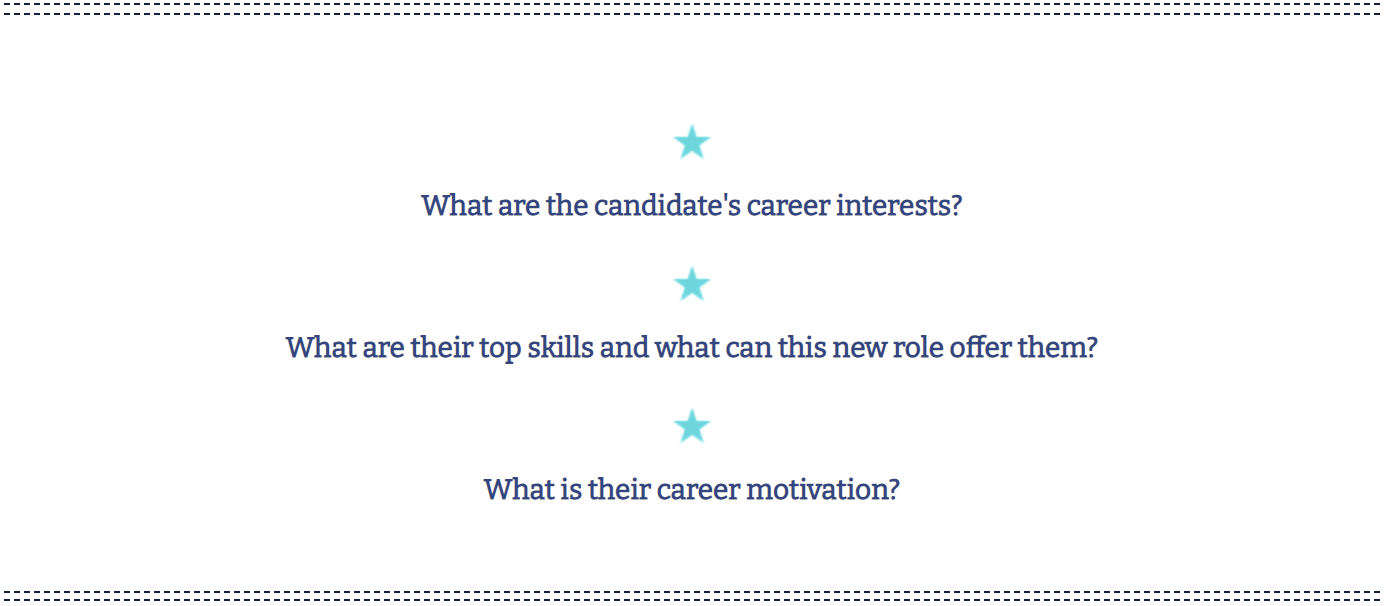
The answers to all those questions will help to structure your pitch in a way that speaks to the candidate, the key here is to sound honest and genuine. And this is also the core of your outreach pitch.
Do keep in mind that the passive candidates’ motivation to accept an offer is very different from active job seekers’. In most cases, they are more interested in the potential for growth
Most important factors in seeking or considering a new job
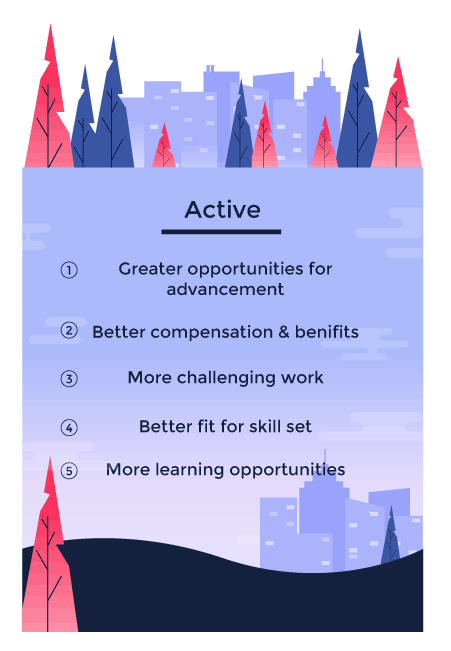
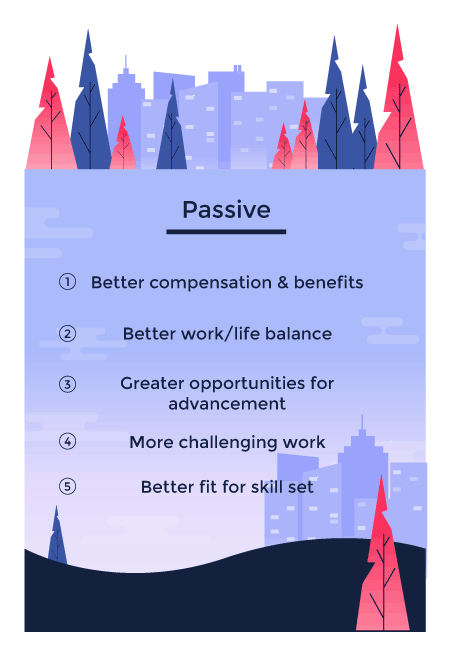
Another thing that you can consider is to share success stories from your current employees or alumnus during their time with your organisation. Feature testimonies on your career site or social media can really make a difference in the entire recruiting strategy.
Engage
Be careful not to fall into the tendency of “hard-selling” the position without considering the needs and wants of your ideal candidates. Due to the lack of integrity, most generic outreach emails or phone calls are getting ignored or worse, damaging the overall employer’s reputation.
To effectively convert a passive candidate into an eager candidate, your outbound email must demonstrate a certain level of potentiality for long-term growth. Basically, the rule is to focus on the benefits that are worthy of their career move. Even if you get a rejection, try to turn uninterested candidates into an additional referral source as well.
If you are contacting a stellar candidate or any passive candidate for that matter, the more personalized the email the better. Here’s an example:
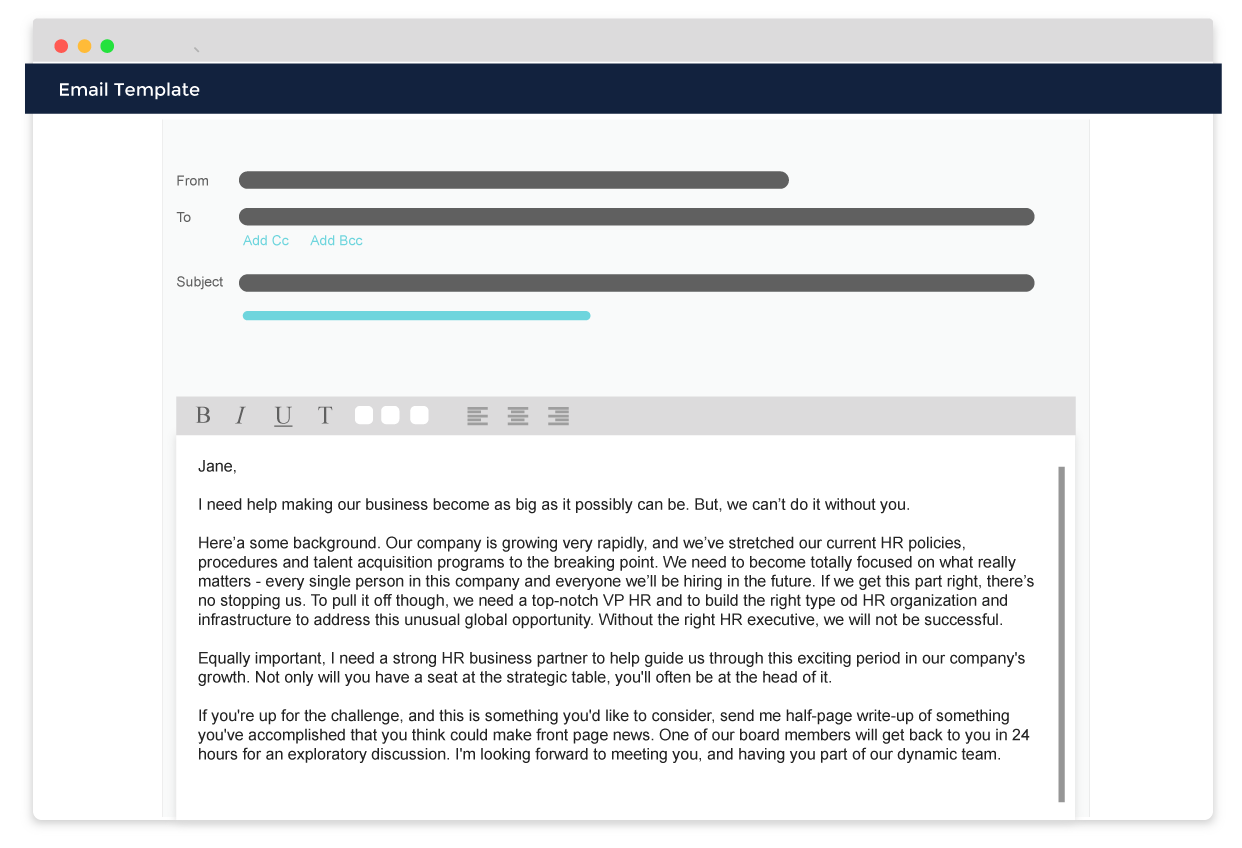
The deciding factors that convince the candidate to make a career move are: their growth plan in your company and the company’s performance itself. Hence, your pitch should indicate the advancement opportunities of the position within the organisation and how that role contribute to the mutual success of the team.
Be Prepared
Your job as a recruiter doesn’t stop at the moment your candidate agrees to an interview. You must also be well equipped for the closing process, which will require you to collaborate closely with the hiring managers.
Before scheduling an interview appointment, it’s recommended to get the direct hiring manager to get to know your sourced talents as well, ideally via phone. This is to ensure that the information about the position as well as the impression of the company is consistent throughout the stages.
During the face-to-face discussion, allow the candidates to express their thoughts more flexible as compared to the typical assessment for active candidates. This is because their motivation to consider this role has been defined previously in the sourcing stage. Furthermore, it’s undeniable that they indeed possess the right skills and experience required for the job, otherwise they wouldn’t have been contacted by you in the first place. So the goal for the interview should be to match their expectation and career path to your organisation’s vision and direction. It’s clearly a two-way conversation rather than merely a Q&A session.
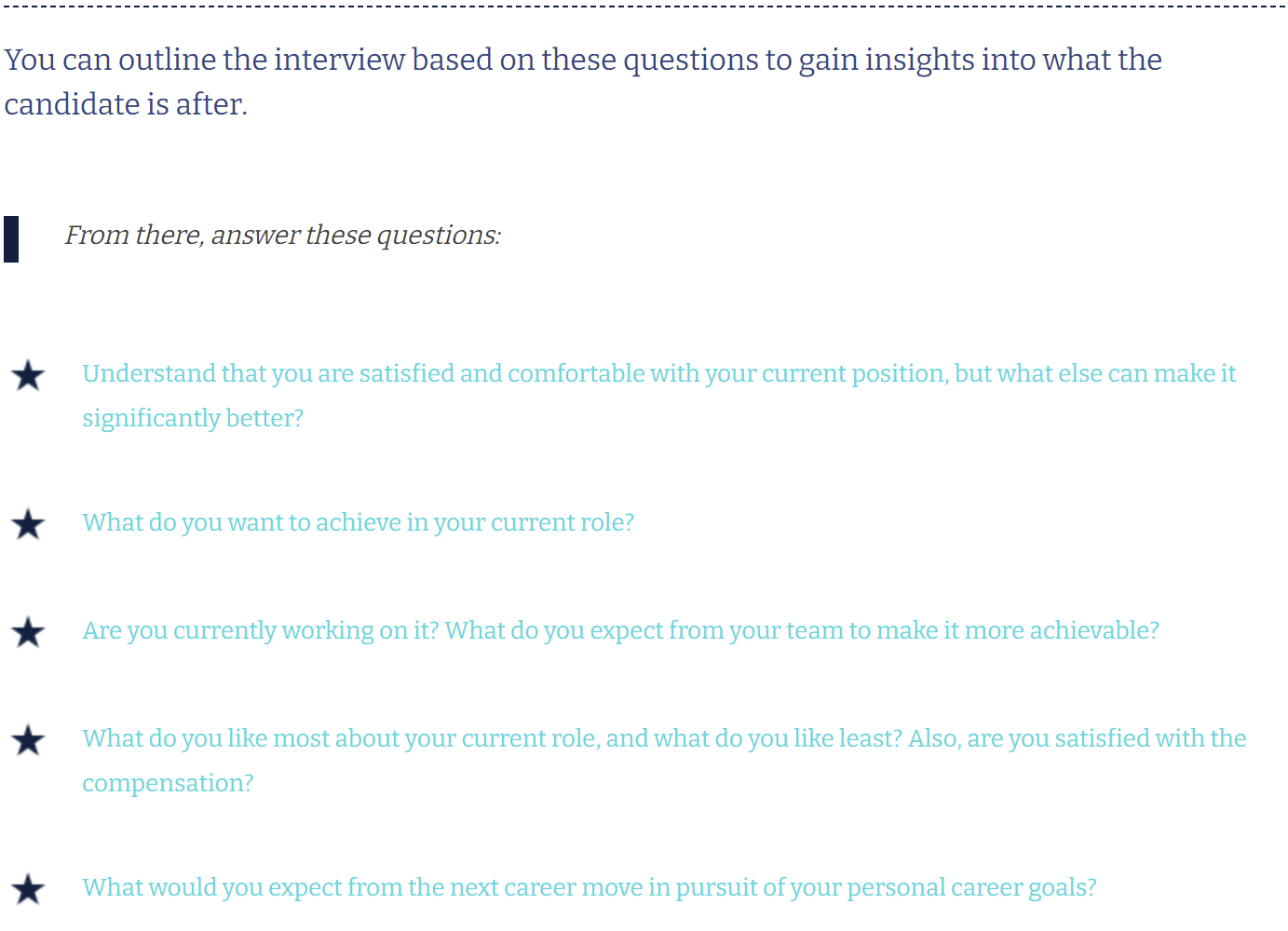
To sum up, you must ensure that the position that you are hiring makes sense for the sourced candidate and vice versa. You wouldn’t want to “tempt” someone to work for you and end up realizing how unfit they are for the team or for your business needs.
Happy hunting!

